The Fundamentals Of Digital Semiconductor Testing
1: The Basics
Objectives
Scientific/Engineering Notation
Current
Resistance
Using Ohms Law to Test Device Specifications
Digital Numbers
Digital Logic
2: Overview of Semiconductors and ATE
Objectives
ATE-Automated Test Equipment
Semiconductor Technologies
Digital and Analog Circuits
Type of ATE System
Tester Loadboards
Wafer Probng
Probe Cards
Device Handlers
Temperature Forcing Units
3: Introduction to test
Objectives
Basic Terms
What is The Correct Way to Test
The Test System
The PMU
The Pin Electronics
Basic Rules of Test Engineering
4: Device Sepcifications
Objectives
Basic Terms
The Design Specification
The Test Specifications
The Device Specification
Test Conditions and Limits
Parameters that Apply to Parametric Testing(DC)
Parameters that Apply to Functional and AC Testing
Logical Functions
Reading Device Specifications
256X4 RAM Specifications
Interpreting the Device Specification
Device Specifications and Test Conditions
5: Open and Sorts - PMU Method
Objectives
Why Test for Opens and Shorts?
Opens and Shorts Serial Static Method
6: Verifying DC Parameters
Objectives
Basic Terms
Binning
Program Flow
Test Summary
DC Tests and the Hidden Resistance
Ohm's Law
VOH/IOH
VOL/IOL
IDD Gross Current
IDD Static Current
IDD Dynamic Current
Input Currents (IIL/IIH)
Resistive Input - Pull-ups and Pull-downs
Output Fanout
High Impedance Currents (IOZL/IOZH)
Input Clamp (VI)
Output Short Circuit Current (IOS)
7: Verifying Function Parameters
Objectives
Basic Terms
Functional Testing
The Test Cycle
Input Data
Input Signal Formats
Developing Input Signal Timings
Output Data
Testing Outputs
Developing Output Signal Timing
Vector DAta
Executing a Functional Test
Functional Specifications
Gross Functional Tests
Equation Based Timing
Functionally Testing a Device
Sample Device Specification
Specification Test Conditions for the Clocked Inverter
Test Program Statements for Clocked Inverter
Standard Functional Tests
Opens and Shorts - Functional Method
VIL/VIH
VOL/IOL VOH/IOH Functional Test
Resistive Output Loading
Functional Z-state - High Impedance Testing
Open Drain/Open Source Outputs
8: Testing AC Parameters
Objectives
AC parametric Testing
Raed & Record
Go-Nogo Testing
Compromises
Standard AC Parameters
Setup Time
Hold Time
Propagation Delay Measurements
Minimum Pulse Widths
Maximum Frequency
Output Enable Time
Output Disable Time
AC Specifications from 256X4 Static RAM Data Sheet
Developing functional Timing
Write Cycle Timing
Read Cycle Timing
9: Device Characterization
Objectives
Test Vectors and Characterization
The Binary Search
Binary Search Test Applications
The Linear Search
Common Characterization Paameters
The Test System Dataloger
Use of Test System Tools
Shmoo Plots
Thrshold/Level Search
10: Test Vector Development
Objectives
Test Vectors
Example Vector File
Working with the Design Engineer
Creating Vectors by Hand
Tester Options (Memory Considerations)
Test Vector Examples
Simulation Data
Simulation for Test
11: Test Program Development Issues
Objectives
What is the Primary purpose of the Test Program?
Other Consideration
Initializing the Program
Verifying the Test Setup
Power-on Sequencing
Power-off Sequencing
12: Creating a Test Program
Objectives
Developing the Test Plan from the Device Specification
Designing the Test Hardware
Writing the Test Program
Loadboard Tests
Tester Diagnostics
Running the Program the First Time
Verifying the Functional Test Setup
A Brief Discussion on Test Vectors
13: Troubleshooting
Objectives
Introduction
Where to Begin
Example: IIL/IIH Test Failures
Debug Tools
14: Qualifying and Documenting the Test Program
Objectives
Qualification
Verify testing on handlers and probers
Documenting the Test Program
15: CMOS Device LAtch-up
Objectives
What is Latch-up?
Latch-up Testing
Test Patterns
Test Procedure Summary
Applying Test Stimulus
16: Priciples of Scan Testing
Objectives
What is Scan Testing?
LSSD Technique
Scan Test Equipment
Glossary
Answers to Review Questions
S3-Introduction to Test
S4-Workbook Exercise
S4-Device Specifiction
S5-Opens and Shorts
S6-DC Tests
S7-Functional Test
S8-AC Testing
S9-Device Characterization
S10-Test Vector Development
S11-Test Program Development issue
S12-Creating a Test Program
S13-Troubleshooting
S14-Qualifying and documenting the Test Program
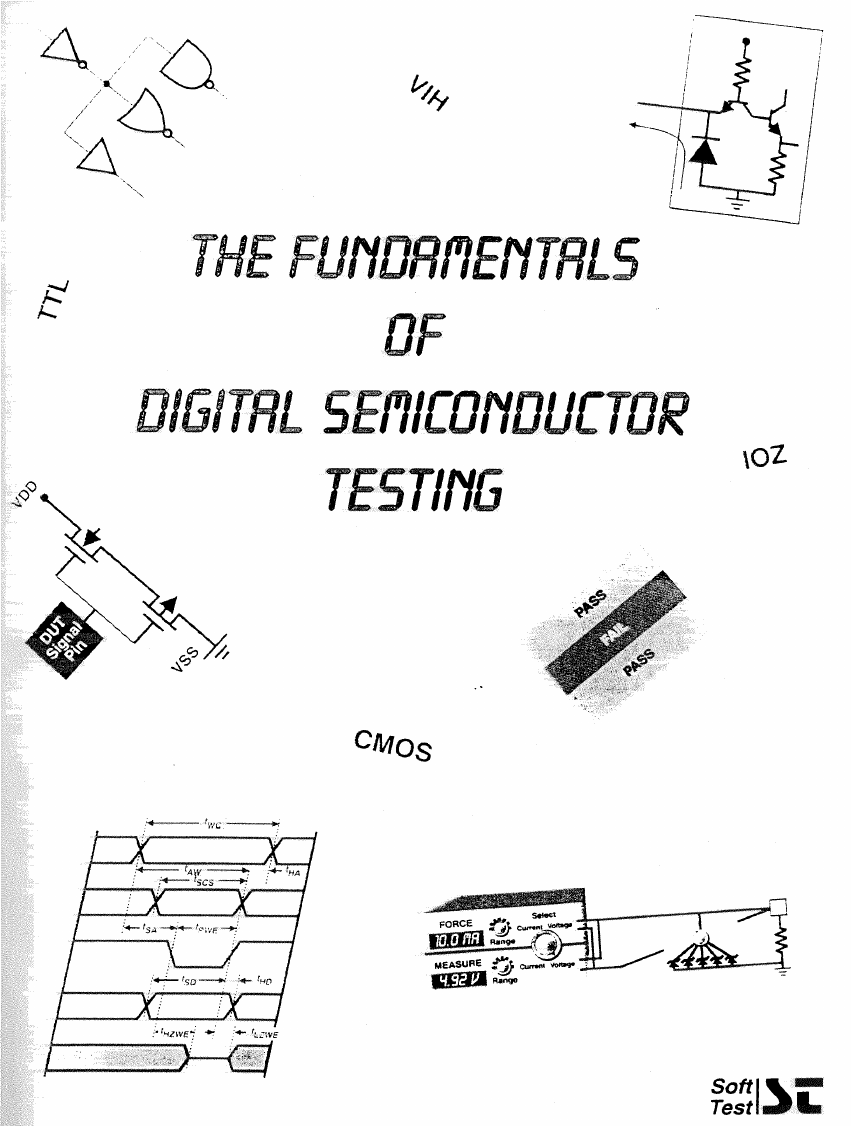
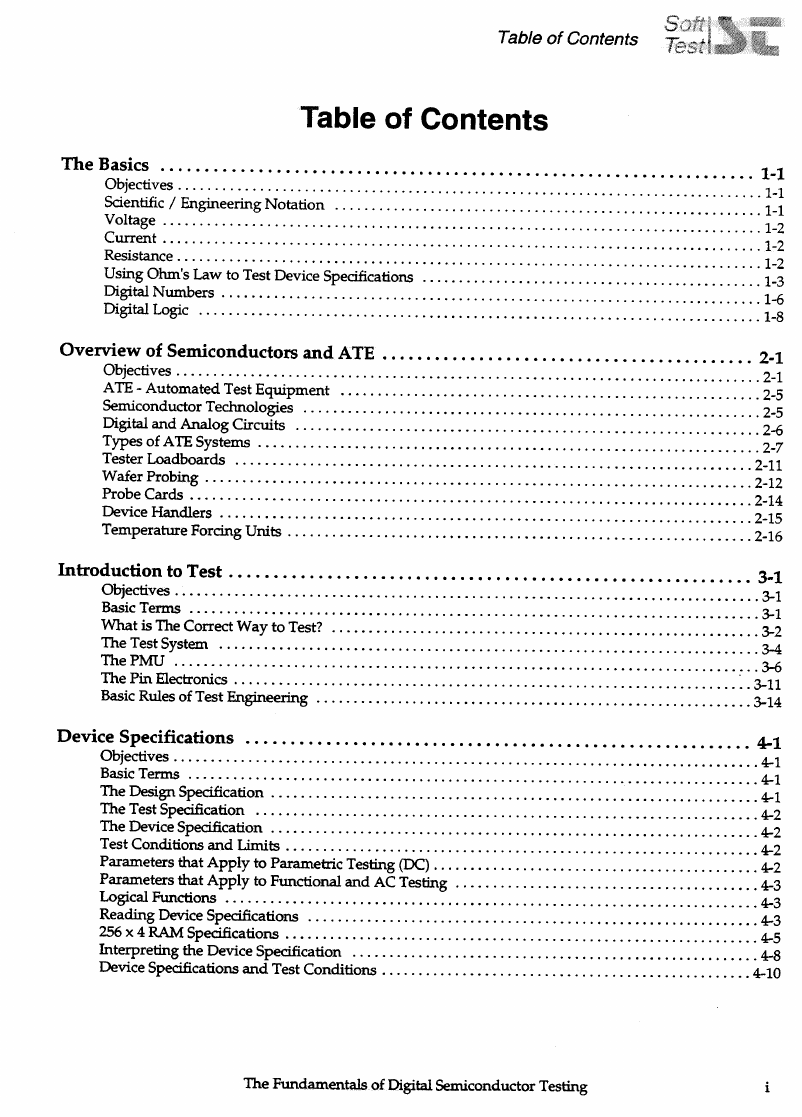
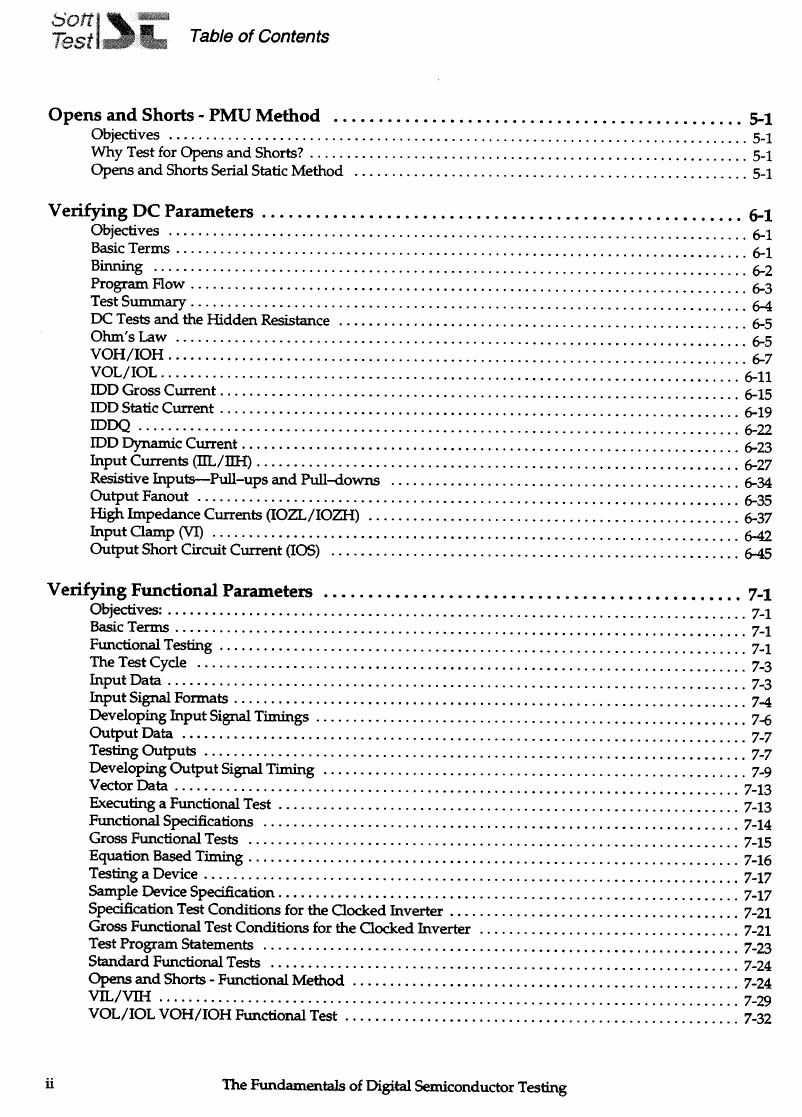
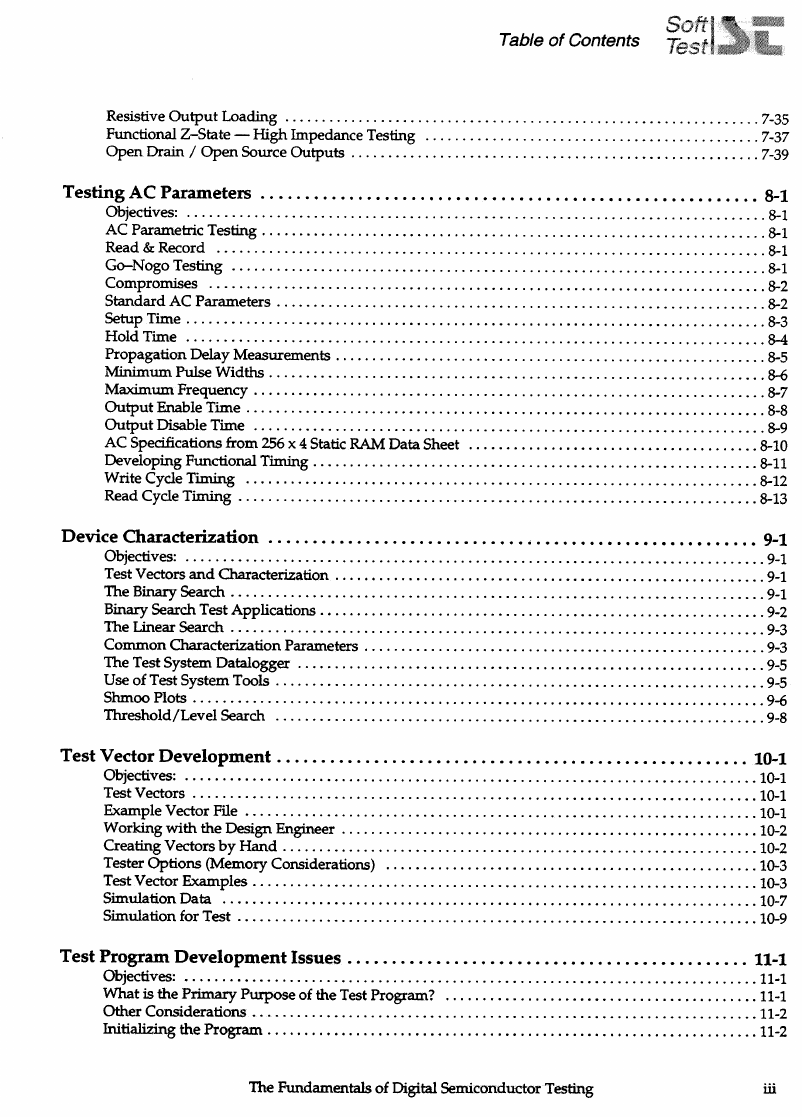
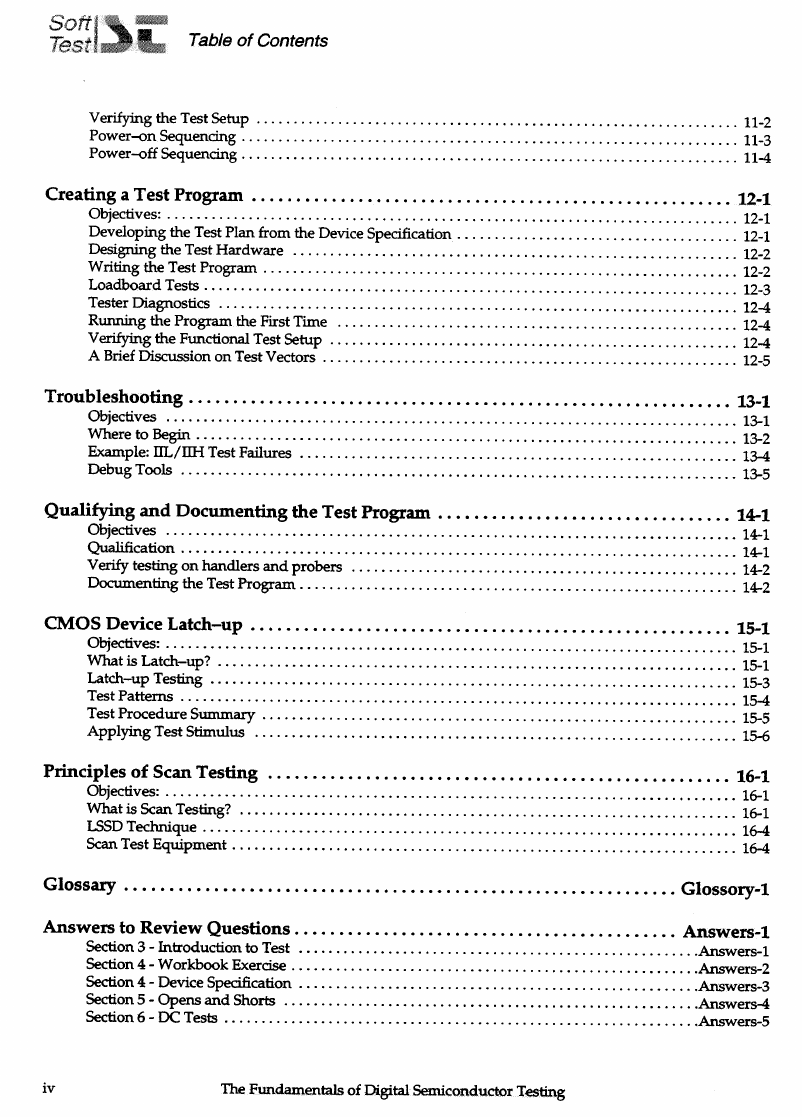
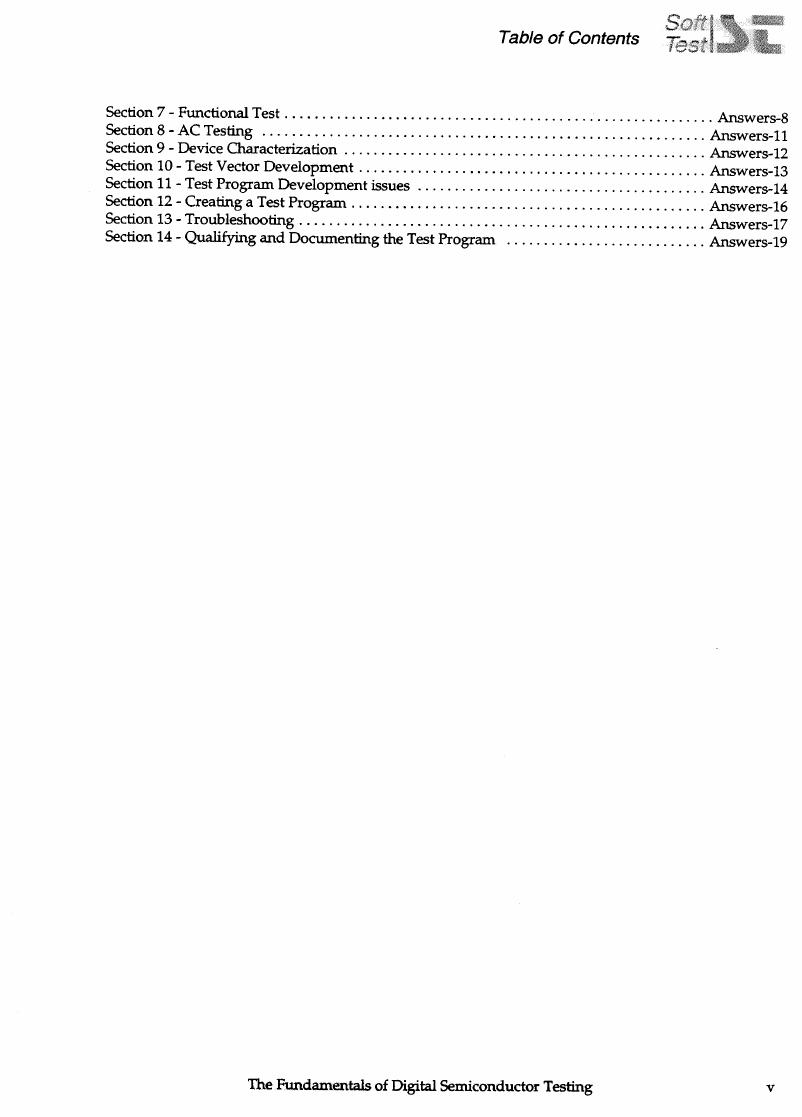
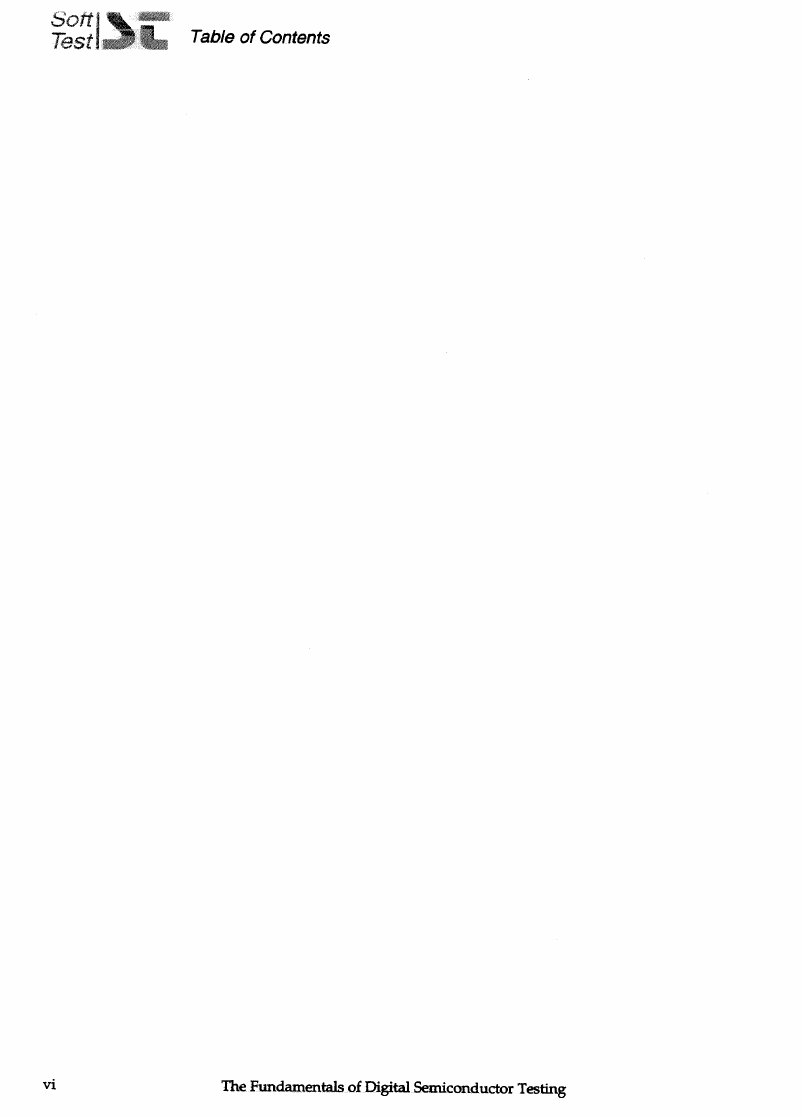
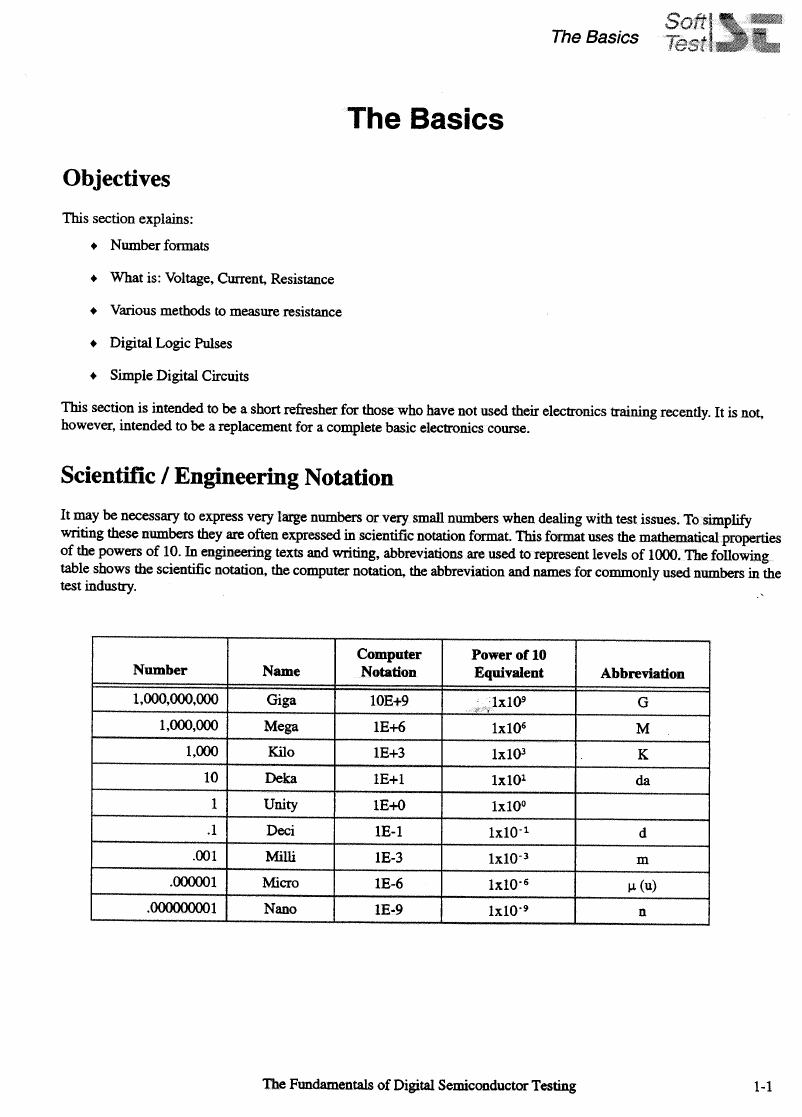








 2023年江西萍乡中考道德与法治真题及答案.doc
2023年江西萍乡中考道德与法治真题及答案.doc 2012年重庆南川中考生物真题及答案.doc
2012年重庆南川中考生物真题及答案.doc 2013年江西师范大学地理学综合及文艺理论基础考研真题.doc
2013年江西师范大学地理学综合及文艺理论基础考研真题.doc 2020年四川甘孜小升初语文真题及答案I卷.doc
2020年四川甘孜小升初语文真题及答案I卷.doc 2020年注册岩土工程师专业基础考试真题及答案.doc
2020年注册岩土工程师专业基础考试真题及答案.doc 2023-2024学年福建省厦门市九年级上学期数学月考试题及答案.doc
2023-2024学年福建省厦门市九年级上学期数学月考试题及答案.doc 2021-2022学年辽宁省沈阳市大东区九年级上学期语文期末试题及答案.doc
2021-2022学年辽宁省沈阳市大东区九年级上学期语文期末试题及答案.doc 2022-2023学年北京东城区初三第一学期物理期末试卷及答案.doc
2022-2023学年北京东城区初三第一学期物理期末试卷及答案.doc 2018上半年江西教师资格初中地理学科知识与教学能力真题及答案.doc
2018上半年江西教师资格初中地理学科知识与教学能力真题及答案.doc 2012年河北国家公务员申论考试真题及答案-省级.doc
2012年河北国家公务员申论考试真题及答案-省级.doc 2020-2021学年江苏省扬州市江都区邵樊片九年级上学期数学第一次质量检测试题及答案.doc
2020-2021学年江苏省扬州市江都区邵樊片九年级上学期数学第一次质量检测试题及答案.doc 2022下半年黑龙江教师资格证中学综合素质真题及答案.doc
2022下半年黑龙江教师资格证中学综合素质真题及答案.doc